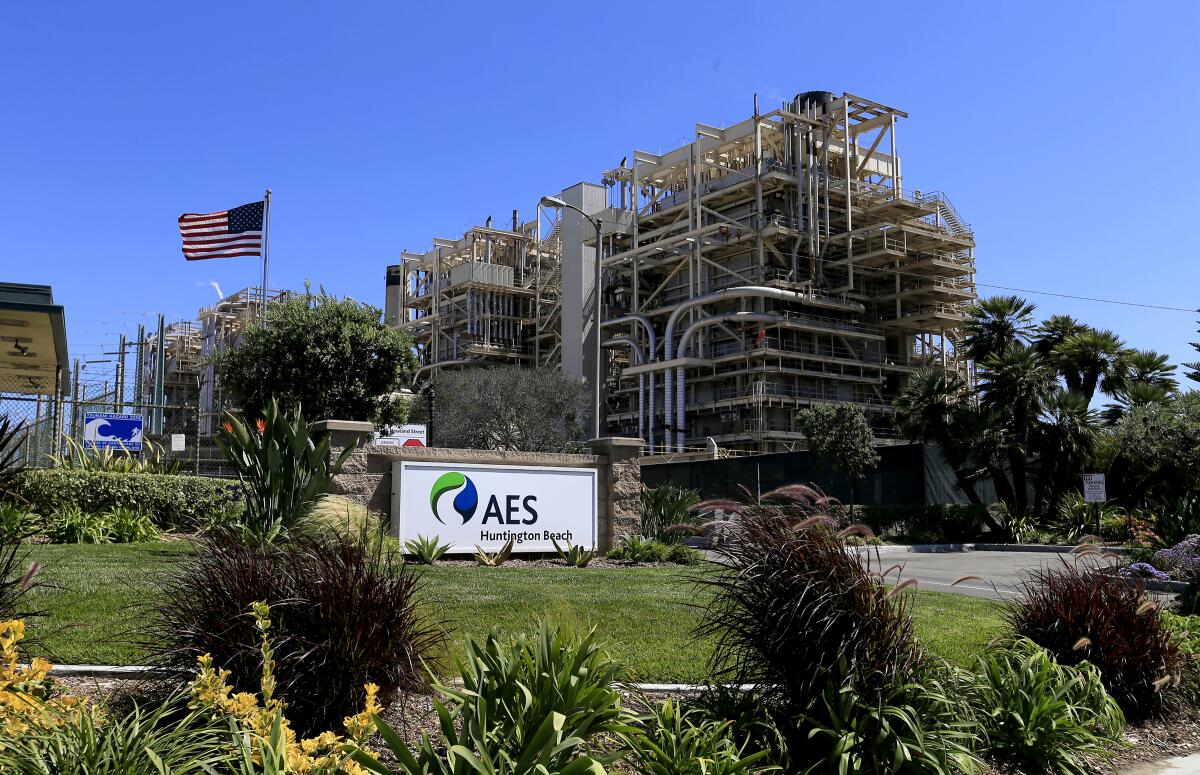Regional water board continues debate over controversial Poseidon desalination plant in H.B.
- Share via
The Santa Ana Regional Water Quality Board on Friday again delayed a vote on Poseidon Water’s controversial desalination plant proposal in Huntington Beach.
Following an eight-hour online Zoom meeting, board members agreed to reconvene on Sept. 17 to discuss whether to renew a permit that would allow the $1.4-billion project to move forward. Should Poseidon get the permit from the water quality board, it would still need a permit from the California Coastal Commission before it could potentially forge a contract with the Orange County Water District and begin construction of the facility.
Santa Ana Regional Water Quality Board chairman William Ruh, vice chair William von Blasingame and director Daniel Selmi were among those who indicated significant concerns about the project. It would be located adjacent to the AES Huntington Beach Generating Station on Newland Avenue, which is soon to cease operation. Poseidon plans to produce 50 million gallons of desalted drinking water per day.
“From the data I’ve seen, it’s not a need issue, it’s a diversification issue,” von Blasingame said. “There is value in locally sourced water. I do hope the agency has put a value on conservation because that’s the most environmentally friendly way ... and we wouldn’t be talking about mitigation and arguing about what the carbon footprint is.”
Proponents of the Poseidon project, which was first proposed in 1998, have cited securing a large, drought-proof water supply for Orange County and relying less on imported water. Opponents have decried increased water costs among other issues. Rates would likely go up between $3 to $6 per month, according to district estimates.
Much of Friday’s regional water board discussion centered on whether the desalination plant was needed, and efforts that Poseidon would be required to take on to mitigate the project’s damage to the marine environment. Board members agreed — going against staff recommendations — that Poseidon would be prohibited from discharges from the desalination facility until it obtained permits for all components of mitigation.
Ruh challenged Orange County Water District executive director of engineering and water resources John Kennedy to make conservation a priority. Kennedy responded that the district takes conservation very seriously, citing a Children’s Water Education Festival held each spring and adding that its sister agency, the Municipal Water District of Orange County, had an even more robust water conservation program.
“What specifically, before you’re looking at this project, are you doing to really integrate conservation into the lives of the residents?” Ruh asked. “Reminders, things on your website, fliers, courses, putting in procedures ... You say there’s a need for the future and to diversify your source. Fourth- and fifth-graders don’t make decisions, adults do. Do you have a program or protocol in place for new development, whether it be commercial or residential, for total drought-tolerant landscaping?”
Kennedy replied that was a city issue, as individual cities issue permits for new development. But Ruh pushed forward.
“It’s up to you, the water district, to set an example,” he said. “On your website there’s nothing about conservation. Before we get expensive water, cutting back is the best thing. But you haven’t said to cities ... to cut back.”
Kennedy later maintained that the Poseidon project was the best way to secure a reliable water source for the future.

“When we look out into the future, we think we’re going to need about 120,000 acre feet a year of imported water,” he said. “The Poseidon project, which would make 56,000 acre feet a year, is our biggest opportunity to significantly cut how much imported water we’re going to need in the future ... It makes a big dent.”
Board member Selmi earlier made a proposal that Poseidon’s mitigation would be split 75%-25% in favor of restoration over preservation (inlet dredging). The board came to a consensus on that figure.
The requirement remains for 112 acres of mitigation, so 84 acres of restoration credit would be required along with 28 acres of preservation credit. Prior to Friday, staff recommendations were for a roughly 60-40 split in favor of restoration.
“The reason we don’t have final details isn’t because Poseidon is unwilling to provide them, it’s because we can’t,” Poseidon Vice President Scott Maloni said, in response to von Blasingame’s charge that the company has not produced a complete mitigation plan. “We can’t advance it because the earth under our feet keeps shifting.”
Restoration of the Bolsa Chica wetlands would be included in the restoration total, and additional restoration would be accomplished within the source water body of the Pacific Ocean if possible. Bolsa Chica would take precedence.
Santa Ana Regional Water Board staff will consult with the State Lands Commission on the feasibility of the mitigation requirements prior to the Sept. 17 meeting.
All the latest on Orange County from Orange County.
Get our free TimesOC newsletter.
You may occasionally receive promotional content from the Daily Pilot.




